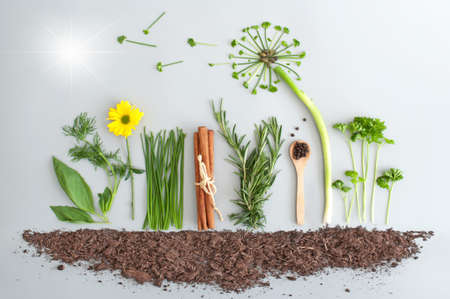1. Understanding the Basics of Bulb Planting
If youre dreaming of a vibrant garden that bursts with color at just the right time, understanding bulb planting is a great place to start. Bulbs are underground storage organs that contain all the nutrients and energy a plant needs to grow and bloom. Theyre like nature’s little packages of potential, waiting for the right conditions to awaken.
What Are Bulbs?
In gardening terms, “bulbs” often refer to several types of underground plant structures including true bulbs (like tulips and daffodils), corms (like crocuses), tubers (like dahlias), and rhizomes (like irises). These structures store food for the plant and help it survive through dormant seasons.
Spring vs. Fall Bulb Planting
The key difference between spring- and fall-planted bulbs lies in when they are planted and when they bloom. Heres a simple breakdown:
| Type of Bulb | Planting Time | Bloom Time | Examples |
|---|---|---|---|
| Fall-Planted Bulbs | Fall (Sept–Nov) | Spring | Tulips, Daffodils, Hyacinths, Crocuses |
| Spring-Planted Bulbs | Spring (Mar–May) | Summer to Fall | Dahlias, Gladiolus, Lilies, Begonias |
How Bulbs Fit Into a Seasonal Garden Plan
Bulb planting is all about planning ahead. Fall-planted bulbs need a period of cold dormancy to develop properly and bloom beautifully in spring. Spring-planted bulbs, on the other hand, thrive in warmer soil and bring color during summer and early fall. By combining both types in your garden plan, you can enjoy continuous blooms from early spring through late autumn.
Pro Tip:
Layering bulbs—also known as “lasagna planting”—allows you to plant different types at varying depths in one container or bed for extended blooming periods.
Quick Planning Tip:
When buying bulbs, check the USDA Hardiness Zone recommendations on the packaging to make sure theyre suitable for your local climate.
2. Spring Bulb Planting: When and What to Plant
Spring bulb planting is all about choosing the right time and selecting bulbs that thrive in warmer soil and bloom beautifully in summer. Unlike fall-planted bulbs like tulips or daffodils, spring-planted bulbs are usually tender and cant survive freezing temperatures, so timing is key.
When to Plant Spring Bulbs
In most parts of the U.S., spring bulbs should be planted after the danger of frost has passed and the soil has warmed up to at least 60°F. This is typically from late March to May, depending on your USDA hardiness zone. Southern states may plant earlier, while northern areas might need to wait until mid- or late spring.
Suggested Planting Times by Region
| Region | Typical Planting Time |
|---|---|
| Southeast (Zones 8-10) | Late March – Early April |
| Midwest & Northeast (Zones 5-7) | Mid-April – Early May |
| Northern States (Zones 3-4) | Late April – Mid-May |
| Pacific Northwest (Zones 6-9) | April – Early May |
Popular Spring-Planted Bulbs
Spring bulbs are known for their vibrant colors and ability to light up your garden during summer. Here are some favorites among American gardeners:
Top Picks for Spring Bulb Planting
- Dahlias: Known for their large, colorful blooms; ideal for borders or cutting gardens.
- Gladiolus: Tall spikes of flowers perfect for bouquets; plant every two weeks for continuous blooms.
- Cannas: Tropical-looking foliage with bright flowers; great for sunny spots.
- Begonias: Thrive in shady areas; excellent for containers or hanging baskets.
- Calla Lilies: Elegant trumpet-shaped flowers; suitable for both garden beds and containers.
Tips for Healthy Summer Blooms
To get the best results from your spring bulbs, follow these simple tips:
- Select healthy bulbs: Choose firm, mold-free bulbs without soft spots.
- Prepare the soil: Use well-draining soil enriched with compost or organic matter.
- Plant at the right depth: A good rule of thumb is to plant bulbs two to three times as deep as they are tall.
- Add mulch: Mulching helps retain moisture and control weeds.
- Water regularly: Keep the soil moist but not soggy—especially during dry spells.
- Feed monthly: Use a balanced fertilizer once shoots appear to promote strong growth and blooming.
With just a little planning, spring bulb planting can reward you with months of gorgeous color and lush greenery throughout the summer season.

3. Fall Bulb Planting: Getting Ready for Spring Blooms
Planting bulbs in the fall is a great way to ensure a vibrant and colorful garden when spring arrives. Popular choices like tulips, daffodils, and crocuses need a period of cold dormancy to bloom beautifully, which makes fall the ideal time to plant them. Here’s how to get started:
Timing It Right
The best time to plant fall bulbs is when soil temperatures have dropped below 60°F but before the ground freezes. This usually falls between late September and early November, depending on your USDA hardiness zone.
| USDA Hardiness Zone | Ideal Planting Time |
|---|---|
| Zones 3–4 | Late September to Early October |
| Zones 5–6 | Mid to Late October |
| Zones 7–8 | Late October to Early November |
| Zones 9–10 | November (Pre-chill bulbs if needed) |
Site Preparation Tips
Choose a location with well-draining soil and full to partial sun exposure. Most bulbs don’t like soggy soil, so make sure water doesn’t pool after rain. Before planting, loosen the soil about 8-12 inches deep and mix in compost or bulb fertilizer for better root development.
Steps to Prepare Your Site:
- Remove weeds and debris from the area.
- Loosen the soil with a shovel or garden fork.
- Add compost or bulb-specific fertilizer.
- Create holes that are about three times as deep as the bulb is tall.
Top Fall Bulbs for Spring Color
If youre looking for reliable and beautiful spring blooms, these classic bulbs are favorites across American gardens:
| Bulb Type | Bloom Time | Color Options | Notes |
|---|---|---|---|
| Tulips | Mid to Late Spring | Red, Pink, Yellow, Purple, White, Bi-color | Best treated as annuals in warmer zones; pre-chill if needed in Zones 9–10. |
| Daffodils (Narcissus) | Early to Mid Spring | Yellow, White, Orange | Pest-resistant and long-lasting; naturalize well over time. |
| Crocuses | Late Winter to Early Spring | Purple, Yellow, White | One of the first signs of spring; good for borders and lawns. |
A Few Extra Tips for Success
- Pointy side up: Always plant bulbs with the pointed end facing up.
- Mulch after planting: A light layer of mulch helps insulate bulbs during winter.
- Avoid overwatering: Water once after planting; nature usually takes care of the rest over winter.
A little effort in fall leads to a big payoff when spring rolls around. With proper timing and care, your garden will burst into color just when you need it most!
4. Best Practices for Successful Bulb Growth
Whether youre planting spring or fall bulbs, setting them up for success starts with following a few essential best practices. From prepping your soil to watering just right, these tips will help you grow healthy plants with strong roots and vibrant blooms.
Soil Preparation
Bulbs need well-draining soil to prevent rot. Before planting, loosen the soil to about 12 inches deep and mix in compost or organic matter to improve drainage and nutrient levels. Avoid heavy clay soils unless they’ve been amended with sand or compost.
Soil Prep Checklist:
| Task | Why It Matters |
|---|---|
| Loosen soil 10–12 inches deep | Encourages root penetration and drainage |
| Add compost or aged manure | Boosts nutrients and improves texture |
| Avoid waterlogged areas | Prevents bulb rot and fungal diseases |
Planting Depth and Spacing
The general rule is to plant bulbs at a depth that’s 2 to 3 times their height. Spacing depends on the type of bulb—crowding can lead to poor airflow and smaller blooms.
Depth & Spacing Guide:
| Bulb Type | Planting Depth | Spacing Between Bulbs |
|---|---|---|
| Tulips | 6–8 inches | 4–6 inches |
| Daffodils | 6–8 inches | 6 inches |
| Crocus | 3–4 inches | 2–3 inches |
| Hyacinths | 5–6 inches | 4–6 inches |
Watering Tips
After planting, give your bulbs a good drink to help settle the soil and kickstart root growth. For fall-planted bulbs, water once after planting and then let nature take over unless theres a dry spell. Spring-planted bulbs may need more regular watering as temperatures rise.
- Avoid overwatering—bulbs hate soggy soil.
- If rain is scarce, water once a week until the ground freezes (for fall bulbs).
- For spring bulbs, keep the soil lightly moist but not soaked.
Fertilizing for Strong Roots and Bright Blooms
A balanced fertilizer can give your bulbs a boost, especially if your soil is low in nutrients. Apply a slow-release bulb fertilizer at planting time. Avoid high-nitrogen fertilizers which can promote foliage at the expense of flowers.
Fertilizer Tips:
- Use a granular bulb fertilizer (like 10-10-10) when planting.
- You can top-dress again in early spring as shoots emerge.
- Avoid fertilizing late in the season—it encourages soft growth that may not survive frost.
By giving attention to soil prep, correct planting depth, watering habits, and proper feeding, you’ll set up your spring or fall bulbs for a thriving bloom season filled with color and life.
5. Climate Considerations and Regional Tips
When it comes to planting bulbs, understanding your local climate is just as important as choosing the right variety. The United States has a wide range of climates, so timing and techniques can vary significantly depending on where you live. Heres how to tailor your bulb planting approach based on your region.
Understanding USDA Hardiness Zones
The USDA Plant Hardiness Zone Map divides the U.S. into zones based on the average minimum winter temperature. Knowing your zone helps you determine which bulbs will thrive in your area and when to plant them.
| USDA Zone | Fall Bulb Planting Time | Spring Bulb Planting Time |
|---|---|---|
| Zones 3–4 (Cold Climates) | Late September to early October | Late April to May |
| Zones 5–6 (Cool Climates) | October | Mid-April to early May |
| Zones 7–8 (Mild Climates) | November | March to April |
| Zones 9–10 (Warm Climates) | Late November to December (pre-chilled bulbs) | February to March |
Fall-Planted Bulbs by Region
Fall-planted bulbs like tulips, daffodils, and hyacinths need a cold dormancy period, which means colder regions are ideal for natural chilling. In warmer zones (like 9–10), many of these bulbs require pre-chilling in the fridge for 10–12 weeks before planting.
Northern U.S. (Zones 3–5)
Plant bulbs early in the fall so they can establish roots before the ground freezes. Mulching helps protect them from harsh winters.
Southeastern U.S. (Zones 7–8)
Select heat-tolerant varieties like Spanish bluebells or species tulips. Pre-chill traditional spring bulbs if necessary and plant later in the fall.
Southern California, Florida & Gulf Coast (Zones 9–10)
This region requires special attention—most spring-flowering bulbs must be pre-chilled. Consider using native or warm-climate-adapted bulb types like rain lilies or crinum lilies.
Spring-Planted Bulbs by Region
Bulbs planted in spring for summer blooming—like dahlias, gladiolus, and lilies—prefer warmer soil temperatures and no risk of frost.
Northern Regions (Zones 3–6)
Wait until after the last frost date; typically late April through May. Use well-draining soil and full sun locations for best results.
Southern Regions (Zones 7–10)
You can plant earlier—in some areas as soon as February or March. Be sure to provide enough water during dry spells and consider partial shade for heat-sensitive varieties.
Quick Tips by Climate Type
| Climate Type | Key Tips |
|---|---|
| Cold/Continental | Add mulch after planting fall bulbs; lift tender summer bulbs before frost hits. |
| Mediterranean/Dry Summers | Select drought-tolerant species; water deeply but infrequently. |
| Tropical/Subtropical | Focus on warm-loving bulbs; pre-chill others if needed. |
| Humid/Subhumid | Avoid rot with good drainage; space bulbs properly for airflow. |
No matter where you live, knowing your zone and adjusting your practices accordingly will lead to healthier plants and more vibrant blooms throughout the year.


